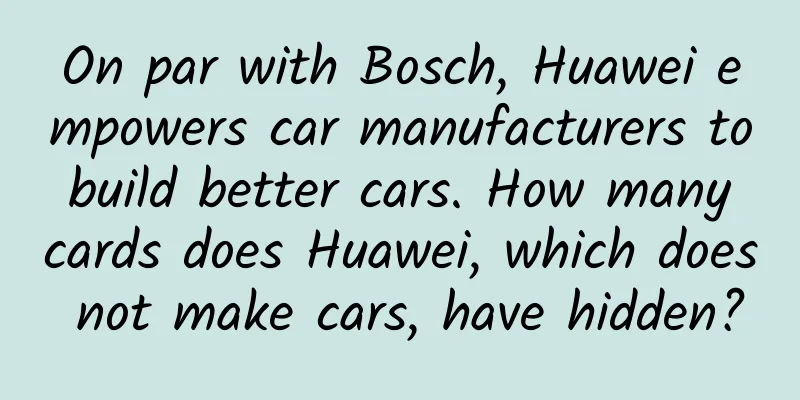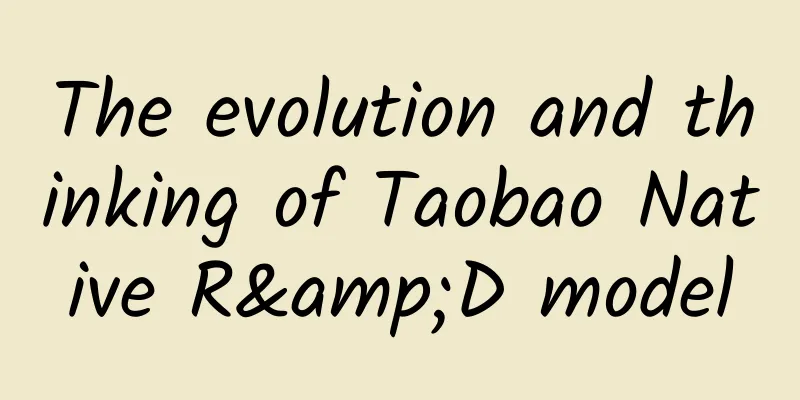On par with Bosch, Huawei empowers car manufacturers to build better cars. How many cards does Huawei, which does not make cars, have hidden?

|
One poster set off the entire automotive industry. Earlier this month, Huawei and ARCFOX jointly announced that the first model jointly developed by the two parties, the ARCFOX Alpha S, will be unveiled at the Shanghai Auto Show. As the second automobile product under Arcfox Auto, Alpha S is positioned as a medium-to-large pure electric sedan. The whole vehicle technology is provided by Magna, and the NEDC range can reach up to 708km. In addition to these hardware indicators, the smart car solution provided by Huawei has undoubtedly become the biggest highlight. Polar Fox is just the beginning The Alpha S released by Arcfox this time, equipped with Huawei HI smart car solution, naturally occupies the center position. It is reported that the solution contains more than 30 intelligent components, including computing and communication architecture, intelligent driving, intelligent networking, laser radar, ARHUD, etc. Its AI computing power, millimeter wave imaging radar point cloud density, laser radar laser line number, and camera detection distance are all at the industry-leading level. Coupled with its self-upgrade and self-optimization features, the Alpha S has been highly anticipated by the market before it even debuted. On the poster of Alpha S, Polar Fox Auto mentioned a key word: "a new benchmark for global autonomous driving". Although more and more automakers in the current auto market have stated that their products are equipped with L2 or L2.5 autonomous driving technology, some automakers have even stated that they will launch L3 and L4 autonomous driving in the next two years. But we all know that Tesla's autonomous driving technology is still the most advanced in the market and is a "benchmark" in the field of autonomous driving. This time, the Alpha S dares to call itself the "new global benchmark for autonomous driving", and is undoubtedly preparing for a head-on confrontation with Tesla. So where does Alpha S’ confidence come from, and how much impact will Huawei’s empowerment have? It is understood that BAIC BluePark's ARCFOX Alpha S HBT version will be equipped with Huawei laser radar. Currently, there are three configuration options: single, dual, and triple. ARCFOX will adopt the most advanced three-laser radar installation solution, and will also be equipped with 6 millimeter-wave radars, 12 cameras, 13 ultrasonic radars, and a Huawei chip with a computing power of up to 352Tops, to form an autonomous driving solution above Level L3. Huawei is even more terrifying if it doesn't make cars At present, many Internet companies and real estate companies are crossing over to the car manufacturing industry. Especially after traditional digital product companies such as Xiaomi and Apple have successively revealed their car manufacturing plans, Huawei has also been linked to a lot of car manufacturing news. For example, at the end of February this year, there were more than one rumors in the market that Huawei planned to build cars. Huawei always responded to these rumors immediately, saying that the company's strategy remained unchanged, Huawei would not build cars, but would focus on ICT technology, become a supplier in the smart car industry, and help car companies build better cars. Two months later, Huawei, which insisted not to manufacture cars, announced that it would launch the Alpha S in cooperation with Polar Fox Auto. Why does Huawei insist on not making cars? Making cars may bring new profit growth points and stories to the company, but the competition in the new energy vehicle industry is fierce, and the threshold for making cars is getting higher and higher. If it enters the market positively, it is actually not conducive to its development. This is the difference between panning for gold and selling water. Instead of taking high risks and working hard to pan for gold, it is better to sell water to gold panners. Huawei's current direction is to appear more as an "automotive intelligent solution provider", providing mature and complete solutions to major automakers. Huawei's chairman Ren Zhengfei has also repeatedly stated that Huawei does not build cars, but in fact, Huawei's influence in the automotive field is far greater than that of major new car companies. For a long time, the automotive field has mainly developed in two directions. One is automobile manufacturers, such as Mercedes-Benz, BMW, Tesla, etc.; the other is automobile parts manufacturers that provide software/hardware components to automobile manufacturers, such as Bosch, Continental, Denso, Magna, etc. Nowadays, what people see most is the performance of automobile manufacturers on the stage, but few people pay attention to the development behind the parts suppliers. In 2020, the total revenue of German Bosch reached 71.8 billion euros (about 554.9 billion yuan), and its revenue in China alone reached 117.3 billion yuan, making it a veritable super car manufacturing "giant". In many core components, Bosch even has the ability to strangle the "neck" of car companies - since the outbreak of the chip shortage, many car companies including Volkswagen and BMW have sent distress signals to Bosch. In fact, Bosch has enough technology to make cars comparable to BBA, but why didn't it choose to make cars? The reason is the same as Huawei's. It sees the profits behind the parts suppliers. From the perspective of profit margin, making cars is really not as good as enabling car making. Therefore, if the Bosch Group is the Tyrannosaurus Rex of the fuel era, then Huawei’s positioning in entering the car manufacturing track is exactly the same - a giant supplier that empowers automobile manufacturing. From the information that has been revealed, Huawei strives to provide car companies with full-stack solutions in car manufacturing technology, so that they can build cars faster and better like building blocks. Today, Huawei has released DriveONE all-in-one electric drive system, 96-line medium and long-range automotive-grade LiDAR, end-cloud battery management system, vehicle charging system, HiCharge DC fast charging module and other world-leading core technology products. Its all-in-one electric drive system directly integrates seven major components, including motor, motor controller (MCU), reducer, branch current converter (DCDC), on-board charger (OBC), power distribution unit (PDU), battery control unit (BCU), etc., with the world's leading technology level. Among them, the "cake" of automotive lidar was originally divided among overseas giants such as Velodyne Lida, Quanergy, Leddar Tech, and Ibeo, but Huawei took advantage of the opportunity and became a leader in the industry. At the end of last year, Huawei released a 96-line medium- and long-range lidar product with extremely rich application scenarios, including being able to effectively respond to long-distance obstacles, close-range lane changes, near-end protrusions, tunnels, left turns at intersections, basements, etc. In addition, according to Wang Jun, president of Huawei's Intelligent Automotive Solutions BU, the company also plans to reduce the cost of LiDAR to $200 or even $100, thus breaking the situation where foreign brands dominate the LiDAR market and earn high premiums. Of course, Huawei's autonomous driving still has a lot of room for improvement. Since LiDAR cannot recognize the color of traffic lights, text and images on traffic signs, and rotating LiDAR is easily damaged, it will destroy the streamlined body of the car and increase wind resistance. In this regard, it is believed that Huawei's most likely solution in the field of autonomous driving will still be vehicle-road collaboration, and it will not rely solely on LiDAR like Tesla. Vehicle-road collaboration adopts advanced wireless communications and new generation Internet technologies to implement all-round dynamic real-time information interaction between vehicles and roads, and carries out vehicle active safety control and road collaborative management based on the collection and integration of dynamic traffic information in all time and space, fully realizing the effective collaboration between people, vehicles and roads, ensuring traffic safety, improving traffic efficiency, and forming a safe, efficient and environmentally friendly road traffic system. Among them, Huawei's 5G technology will play a decisive role, because vehicle-road collaboration attaches great importance to the role of data centers and the allocation of cloud data. At present, Huawei's technology in the 5G field has been improving day by day. In the future, Huawei will surely lead the way in the development of autonomous driving. In other words, judging from the lidar technology accumulation that Huawei has achieved, we can basically get a glimpse of the future of autonomous driving - lidar will quickly come down from the altar and become the absolute standard for autonomous driving vehicles. A few years ago, a set of LiDAR still cost tens of thousands of dollars. Even now, the price of LiDAR exported to China by many overseas companies is still around 2,000 US dollars. Huawei has directly lowered the price to 100 US dollars, which has greatly promoted the popularization of autonomous driving technology. Many people know that Xiaomi is famous for its extreme cost-effectiveness and is even nicknamed the "price butcher". In fact, in many high-tech product fields, Huawei is the real "price butcher" for European and American giants, often selling various high-tech products at 1/2 to 1/10 of similar products overseas, directly suppressing a number of European and American technology giants, and this scene is about to appear again in the automotive field. Although Huawei's car manufacturing business has not been going on for a long time, it has already obtained 100,000 patents and various technologies that are strongly related to car manufacturing. In general, in the field of car manufacturing, Huawei may become the biggest behind-the-scenes winner with its own manufacturing level and low-cost advantages. So far, Huawei has established cooperative relationships with more than 20 automobile manufacturers, including BAIC, Changan, GAC, BYD, SAIC, FAW, and Audi. More than 150 models are equipped with HiCar, Huawei's full-scenario interconnection solution for people, cars, and homes, and the number of cars pre-installed with HiCar exceeds 5 million. This shows that Huawei's car-making ecosystem/car-machine ecosystem has spread its wings and is ready to take off. Although Huawei does not manufacture cars, it has formed a strong guarantee to influence the development of electric and smart cars around the world. Alpha S is just the beginning of Huawei's layout in the automotive industry, aiming to demonstrate its strength to many car companies and lay the foundation for subsequent cooperation with more car companies. Made in China is no longer "stuck in the neck" Huawei's car-making plan is not only to help itself get out of trouble, but also to help domestic traditional car manufacturers and new car-making forces to manufacture better electric vehicles. In this regard, it is believed that Huawei is no longer a communications equipment giant, but together with BYD and CATL, it is breaking the century-old rules of the game set by Bosch and providing core driving force for the reshaping of China's automobile industry. For a long time, Chinese automobile companies have lived under the shadow of overseas suppliers, doing the hardest work, earning the least profit, and always worrying about being "choked". Last year, due to the impact of the new coronavirus, China's auto industry has been hovering on the profit and loss line. According to a survey of 212 auto parts companies by the China Association of Automobile Manufacturers, 16% of the companies suffered operating income losses of 20 million to 50 million yuan due to the epidemic, and the main reason for the losses was actually problems with the parts supply of foreign companies. Entering the electric era, all this has begun to change. With a large number of high-quality suppliers such as Huawei, BYD, and CATL, the strength of Chinese automakers will be fundamentally changed, at least they will no longer be controlled by others. Why build cars? Wouldn't Huawei, which only empowers but does not build cars, make foreign giants even more terrified? As a winner of Toutiao's Qingyun Plan and Baijiahao's Bai+ Plan, the 2019 Baidu Digital Author of the Year, the Baijiahao's Most Popular Author in the Technology Field, the 2019 Sogou Technology and Culture Author, and the 2021 Baijiahao Quarterly Influential Creator, he has won many awards, including the 2013 Sohu Best Industry Media Person, the 2015 China New Media Entrepreneurship Competition Beijing Third Place, the 2015 Guangmang Experience Award, the 2015 China New Media Entrepreneurship Competition Finals Third Place, and the 2018 Baidu Dynamic Annual Powerful Celebrity. |
Recommend
From zero to the third largest e-commerce company, how did Pinduoduo increase its user base?
It took Pinduoduo two years and three months to b...
Xing Ming, President of Tianya Community: I accidentally entered IT industry. Five reflections I have made over the past 17 years
What I wanted most was to be a journalist, but so...
Secret's demise reveals Silicon Valley startups' "flash in the pan" trend
A twist of fate Last summer, employees of the sta...
Sony vs. Samsung: Which 55-inch 1080p TV is better?
From a business perspective, the TV business is ob...
7 mistakes in app user acquisition and 7 ways to avoid them
Exploring mobile applications is not an easy task...
How to promote and attract traffic to Douyin? What are the 6 ways to attract fans and traffic to Douyin?
There are 6 main ways to attract customers on Dou...
Get to the bottom of it丨Archaeology reveals how many steps are involved in making the Terracotta Warriors?
Armed with weapons and sharp weapons, sweeping ac...
The new radio and television policy slows down the development of Internet TV, but it is of great significance to rectify the market
The State Administration of Press, Publication, R...
iOS 16 update fixes a lot of issues
Two weeks ago, Apple previewed iOS 16 to the outs...
Have you ever used the black technology code? The god-like automatic code app
When we share screenshots, we usually block out o...
UFOs spotted in the sky over many places, are they aliens or weapons from other countries? The truth is →
Around 6 p.m. on January 14, 2024, people in many...
Chrysler Pacifica hybrid version was reported to be discontinued
According to foreign media reports, FCA's Chr...
APP fission guide: How to design a productized new user acquisition mechanism to achieve user growth?
When it comes to product-based new user acquisiti...
Twitter executive: Apple's new iOS 14.5 privacy collection permission policy has little impact
Beijing time, April 30 morning news, Twitter toda...
Spring is here, and rhinitis is here! How to deal with annoying allergic rhinitis?
It is spring again, and it is the time to enjoy t...









